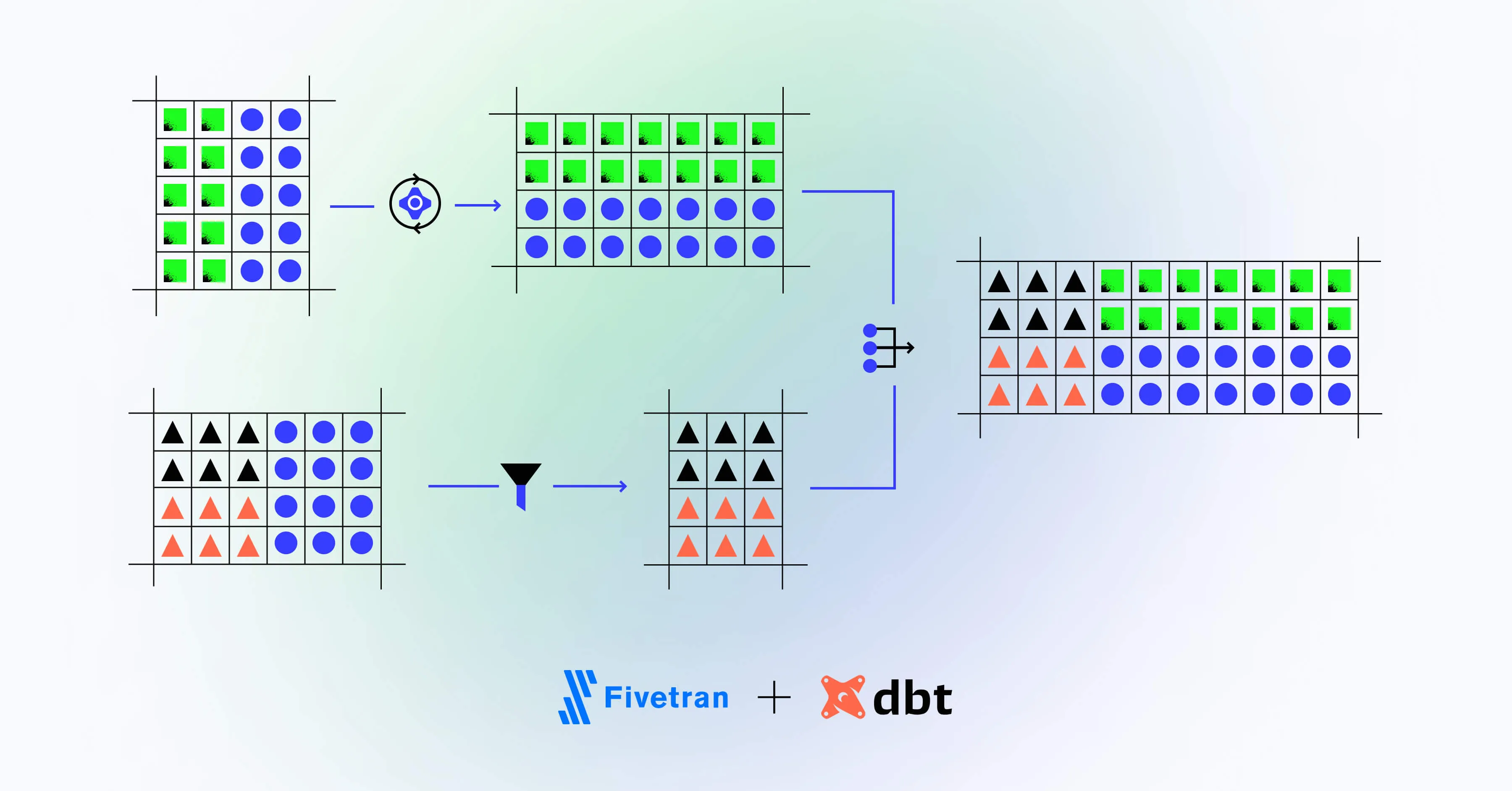How a customer data platform (CDP) benefits your business


Share
Implementing a customer data platform (CDP) is an important step in planning for and encouraging the continued growth of your business.
Satisfied customers are more likely to return and more likely to evangelize your product. To satisfy your customers you need to know how and why they are using your service and understand their changing expectations. This can only be achieved by turning the raw data you collect from your users into actionable information.
Composable customer data platforms are the infrastructure you will use to host and query customer data and build profiles linked to real people. This allows you to give them an experience that is tailored to their expectations.
This article will explain the benefits of using a composable CDP and some of the features you should consider when choosing one for your business.
What is a customer data platform (CDP)?
A customer data platform is a centralized data store for all of the customer data you generate in your applications and business process. Your data is available and queryable in a single data store, rather than having it spread across different databases with different table structures and data formats.
Unlike data warehouses and data lakes, a CDP goes further than just storing customer data – it’s a unified platform for data collection, enrichment, and storage. A properly tuned CDP will go as far as being able to build unique individual customer profiles from multiple connected data sources.
Why is customer data so important?
Without your customers, your business would not exist. When launching your business you must acquire customers, and to continue trading you must keep them engaged with your brand or product.
New customers will be made aware of your brand through your marketing channels. They will be influenced by the opinions of your existing customers on how satisfied they are with their interactions with your business.
Existing customers will be encouraged to continue making valuable interactions with your product or service if they are receiving a tailored, personalized experience which caters to their interests and exceeds their expectations.
How does a CDP benefit my business?
Having your customer data in one place makes it easy to manage and query.
For example, if your users’ browsing habits are stored with your analytics provider but your sales data is stored in your e-commerce solution, it will be difficult to associate the browsing habits of a user with their purchases from you.
By capturing data from multiple sources and sending it to a CDP, interactions can be associated with specific users to help identify who is spending money, and give insight into what in your service is encouraging this valuable interaction. Tailored experiences can be provided to your users based on the profiles you have built on them.
A CDP allows you to identify both trends in your user cohort and the habits and actions of individual users. In conjunction with mobile data attribution, CDPs are a powerful tool for building an accurate profile of your customers and figuring out exactly what they want – so that you can adjust your products and services accordingly.
CDPs help to protect customer data
You should consider two types of protection when deciding on a platform to host your customer data.
The first is the integrity of the data: it should be protected against accidental loss, deletion, or corruption.
The second is security from unauthorized access. To remain compliant with regulations both in your region and worldwide, you must be able to prove that the correct measures are being taken to ensure that your customer data is not being used improperly. Keeping your customers’ private data secure also benefits you – companies that experience data leaks often suffer long-term damage to their reputations.
GDPR, CCPA, and other emerging privacy regulations can be more easily complied with through a CDP. Personal data can be filtered from data streams, preventing it from being sent to destinations which do not (or should not, for legal reasons) need to receive that data.
CDPs help activate customer data
Accurate user profiles built on your existing satisfied customers will allow you to target them more successfully and will direct you on how to attract new users with similar characteristics.
To fully activate your customer data, you should build profiles for audience segments. This will provide feedback on how effectively your marketing channels and products are performing with your audience based on broader grouped characteristics.
Identifying audience segments may lead to you developing differing marketing messages based on regional, interest-based, or demographic subdivisions, making your product more attractive to more diverse groups.
A CDP is different from a DMP or CRM
CDPs are not the same things as DMPs or CRMs.
A data management platform (DMP) collects anonymous data from the web and through apps - data like browsing habits collected through websites.
A customer relationship management (CRM) platform, on the other hand, is a system for tracking your existing customers and your business’ interactions with them as individuals. Emails, sales, and phone calls are logged to ensure customers are correctly identified and receive personalized recommendations or care.
Data from CRMs and DMPs can be fed into a CDP. Data you have automatically or manually captured about your customers can be added to your central data store so that it can be used to build further insight into your audience.
What features should I look for in a customer data platform?
There are several important features you should make sure are present in any CDP you consider:
| Responsive data collection | Seeing your customer data as it is generated makes adjusting your data analysis process more agile. Many CDPs collect data in real-time or near real-time, with very little delay. |
|---|---|
| Ability to connect with the marketing and sales platforms you are using, or plan to use | Your CDP must be able to ingest data from the sources you are using to collect data, including marketing tools, web/app analytics, and e-commerce. As an option, corresponding data should be fed into the data warehouse for further data activation with Reverse ETL tools. |
| Security and GDPR/regulatory compliance | If you are not compliant with local and international regulations when handling customer data, you are putting the future of your business at risk. |
| Easy querying and usability | Your marketing team needs to be able to quickly adopt new tools. Non-technical users need to effectively navigate and query data and generate useful insights to drive business decisions. |
| Migration tools | Things don’t always work out. It is unwise to choose any software product that locks your data away and doesn’t provide a mechanism to export it if you choose to switch to a different platform. |
| Identity resolution and segmentation | Raw data must be cleaned up, structured, and associated with specific visitors or users of your service. It must also be possible to identify broader user habits for effective targeting of future marketing campaigns. |
Unfortunately, a lot of acronyms and jargon are thrown around when discussing CDPs. Expert advice will cut through these confusing terms and ensure you understand what you are investing in and what outcomes to expect.
How are the insights gained from a CDP applied?
How you apply the insights you gain from a CDP will depend on the outcomes you wish to achieve, and how your business interacts with and draws value from its user base. Some common applications are:
- Associating online/offline and in-app interactions with real people
- Recommending products to customers based on their interests
- Ensuring engagement and transactional campaigns are relevant for a given user
- Encouraging positive online product reviews
- Optimizing advertising campaigns
- A/B testing and audience research
- Feature flagging
- Demand prediction
Example CDP services and who’s using them
mParticle is a CDP focused on collecting and processing large amounts of customer data. It has integrations for digesting data from other SaaS products and includes development APIs for building customized data streams. mParticle touts its focus on data quality and governance and provides a single data source for your customer data.
Segment collects events from web and mobile apps and provides a platform to collect, process, and interpret customer data. Segment provides the tools to analyze large amounts of data and build customer profiles by matching activity from a variety of sources.
Hightouch and its compostable CDP with their data activation platform. With Hightouch, marketers can activate audiences from where their customer data already lives - the data warehouse.
Rudderstack is the Warehouse Native CDP, built to help data teams deliver value across the entire data activation lifecycle, from collection to unification and activation. It also has a hosted open-source version as a deployment option.
Mighty Digital is certified solutions partner of Hightouch, Segment and mParticle. An experienced team is ready to work with you to fully understand your business and the nature of your customers to ensure you choose the right customer data platform.
Tailoring a service to your needs
One size doesn’t always fit all, and implementing a CDP isn’t simply a matter of signing up for a service and dumping data into it. To get the most out of your investment and to fully exploit the CDP platform you choose requires planning and experience.
Your business may require that an existing solution be customized to work with your unique data sources and required outcomes. Consulting with an expert team will ensure your CDP solution is suitable for your data requirements and enable decision-making that grows your audience, without adding unnecessary costs to your business.
Fully utilize your customer data by choosing the right CDP
The key to implementing an effective CDP that will add value to and help grow your business is understanding what kind of customer data you will be collecting, and what information you wish to derive from it – both now and in the future.
By ensuring the right CDP solution is chosen, data collected now can remain useful long-term, and allow you to build an accurate profile of your users both collectively and as individuals.
Data collected and not fully utilized is data wasted. Mishandled data is also wasted – rendered useless or expensive to process if it is incorrectly handled and stored. Starting with the wrong CDP solution could be a costly mistake.












